Star Charting Apps for iPhone and iPod Touch
| iStellar |
| iStellar |
iStellar is an easy-to-use star charting app with good graphics and animation features. It now has search capability and can even show comets, but it provides no further information about stars, planets, and deep-sky objects beyond what the chart itself can show.
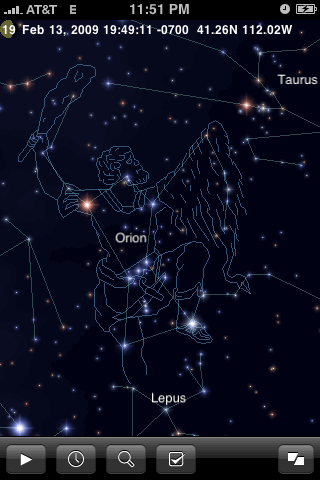 |
This is iStellar at its best: Gorgeous full-color stars, complete with diffraction rays, as well as artist's drawings for all 88 constellations. You can even make the stars twinkle, though I quickly tired of that feature. Constellation names, lines, and pictures can be independently turned off if desired. When you turn them all off, and don't use the light pollution feature, the unrealistic brightness of the numerous faint stars can make it hard to recognize some constellations. As you can see, iStellar always displays the date, time, and location across the top, along with a tiny picture of the moon's phase. The number over the moon is the number of days since it was new. iStellar has two toolbars, but the second one merely has N/S/E/W buttons for moving the chart to face each direction. The rightmost button toggles between the two toolbars. |
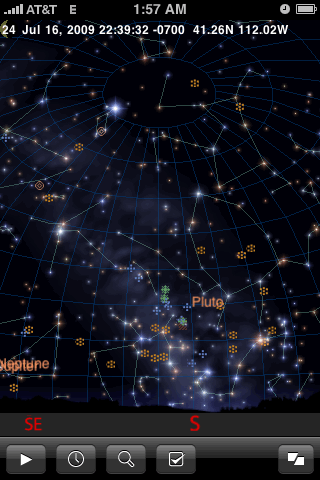 |
The maximum field in iStellar is about 115°, which takes you from the horizon up to somewhat beyond zenith. (In landscape orientation the maximum field is only 90° across the long direction.) The pretty horizon silhouette can be turned off, but the horizon is always opaque so you need to change the time or location to see the other half of the sky. Notice the gorgeous Milky Way! |
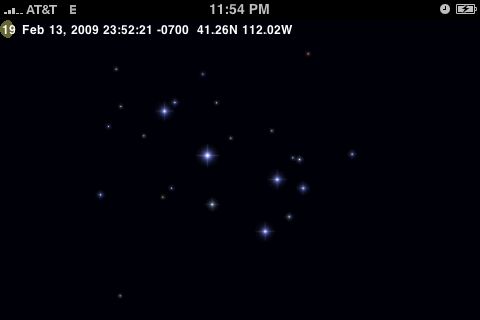 |
iStellar shows stars up to magnitude 7 (somewhat beyond the naked-eye limit) and draws them clearly and beautifully. The faintest stars seem to be drawn a little too bright, making it hard to recognize some patterns. The 3° minimum field of view is almost perfect for the Pleiades and is better than all the other apps except GoSkyWatch. |
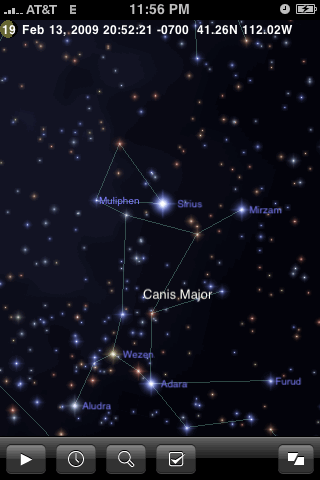 |
This app provides no information at all about the stars, except for the names of 254 of the brighter ones. (The names can be turned off in the settings menu.) |
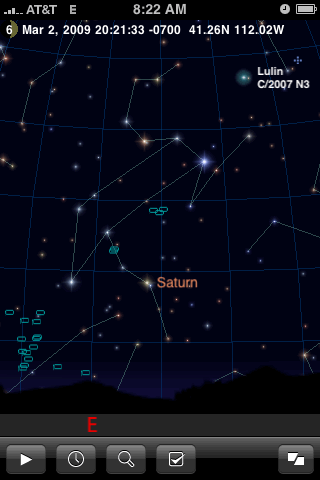 |
iStellar draws planets exactly as stars, so it's easy to tell about how bright they will appear in the sky (although Saturn seems a bit too faint here, compared to the stars in Leo). You can turn off the display of the planet names, but then you can't tell which objects are planets unless you know the sky well. The app provides no further information about the planets. This image also shows a feature that is unique to iStellar: the ability to display comets such as Comet Lulin. The database of comets can be updated periodically using a command in the Settings menu. A list of all comets, with magnitudes and equatorial coordinates, is available through the Search menu. The list predicted Lulin's magnitude at 5.0 on March 2, but the chart seems to show all comets about as bright as second-magnitude stars. |
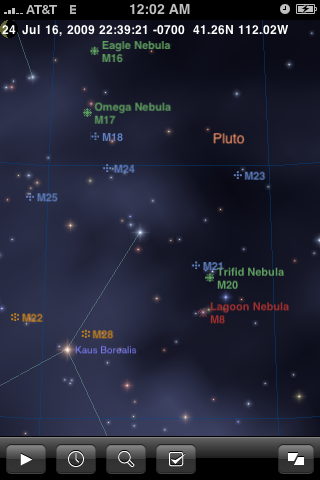 |
iStellar shows deep-sky objects as little colored symbols, distinguishing their various types both by symbol and by color. You can set the app to show any combination of symbols, names, and Messier numbers. No non-Messier deep-sky objects are included, and no further information about the Messier objects is provided. |
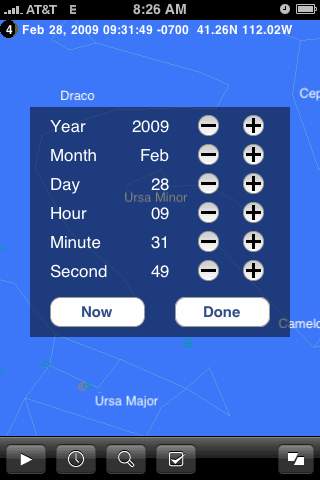 |
It's extremely easy to set the time in iStellar: Just tap the clock button in the toolbar to show the popup time controls, then use the + and - buttons to step forward or back in time. Or use the play button to animate the passage of time, at a rate that you can change in a Settings submenu to either 1 minute, 5 minutes, or 1 day. There's no way to animate backwards in time. |
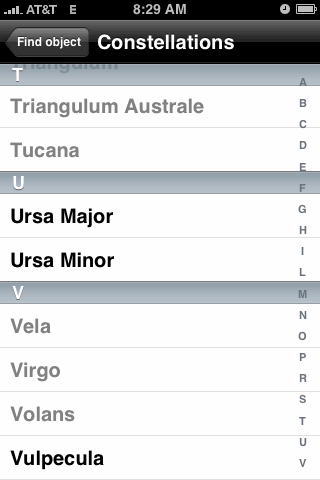 |
Searching in iStellar is straightforward: Tap the search button in the toolbar, then choose a category from the list: stars, constellations, Messier objects, sun/moon/planets, comets, or meteor shower radiants. You then get a list of objects as shown here, with objects that are currently below the horizon dimmed. (The list of comets includes magnitudes and equatorial coordinates, while the list of meteor showers includes dates.) Tapping a name takes you back to the sky chart, which then pans smoothly to the selected object. The menus, unfortunately, are very bright, and there is no night vision mode. |
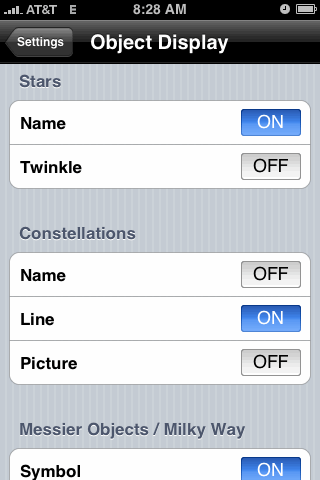 |
The Settings button in iStellar takes you to a menu with several submenus, including Location, Time Zone, and Animation Step. This image shows the longest submenu, Object Display, which lets you turn just about any chart feature on or off. Instead of an explicit magnitude limit for stars, this menu includes a slider for Light pollution intensity--but it's active only when Daylight/Twilight is also turned on, obscuring the stars completely when the sun is up. While this approach is certainly realistic, it can also be a little annoying. |
Ease of Use Rating: 
The quick startup and time-setting interface are especially nice, and the other
settings are mostly straightforward. The lighting options need an overhaul, and some
on-screen help wouldn't hurt.
Information Content Rating: 
Everything seems to be shown accurately, but this app provides no information about
most objects except their names.
Fun Factor Rating: 
The beautiful, responsive graphics make this application great fun for a while.
To hold your interest, though, it would need to provide more information about
what you're looking at.
Creator's Web Site: www.astroarts.co.jp
Back to main page: Star Charting Apps for iPhone/iPod Touch
Last modified on 16 February 2009.